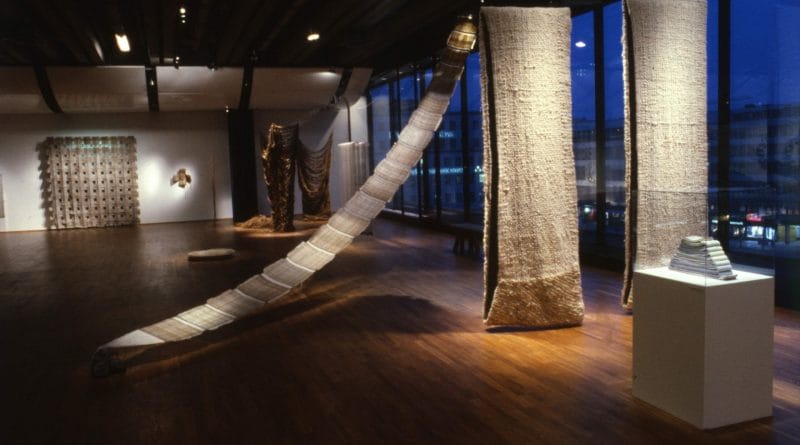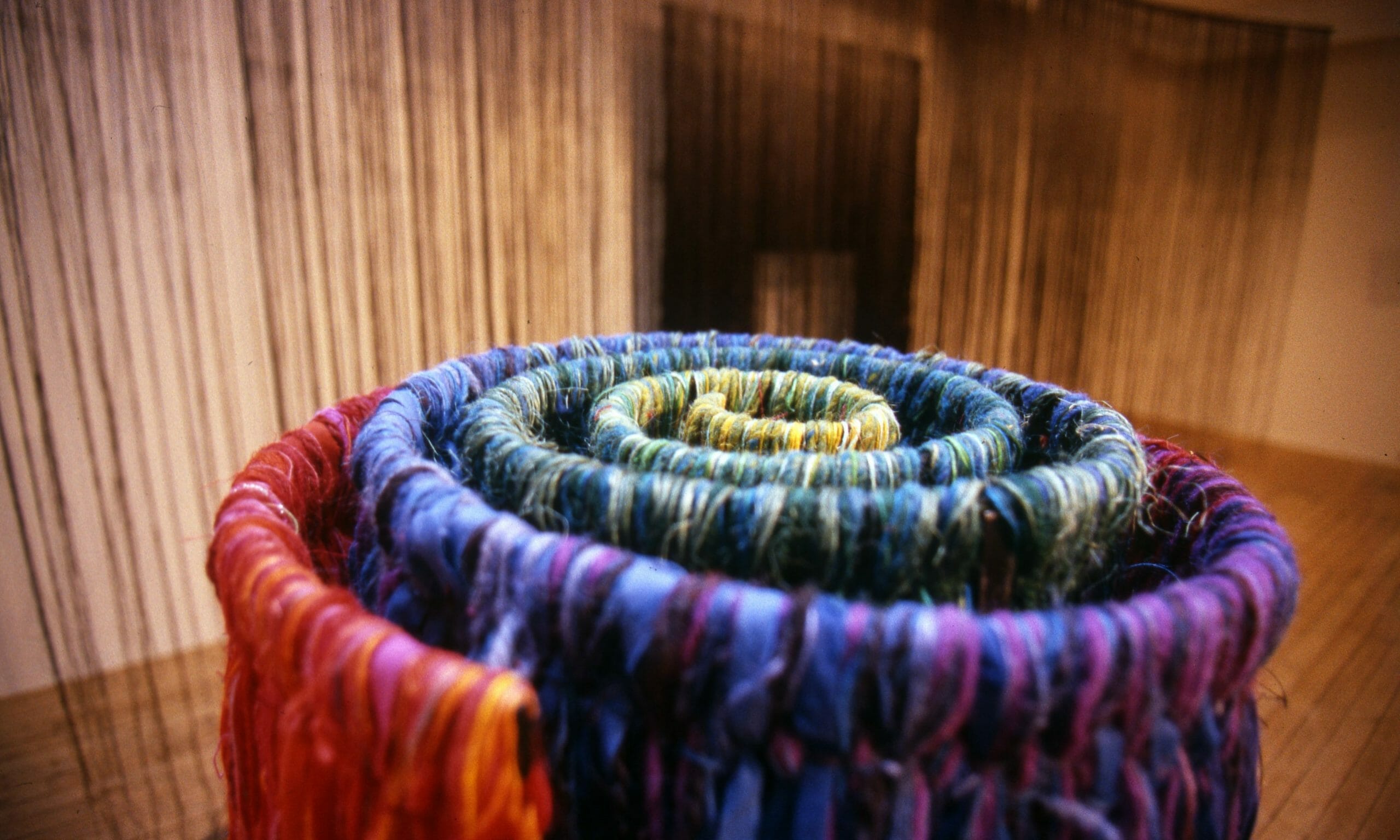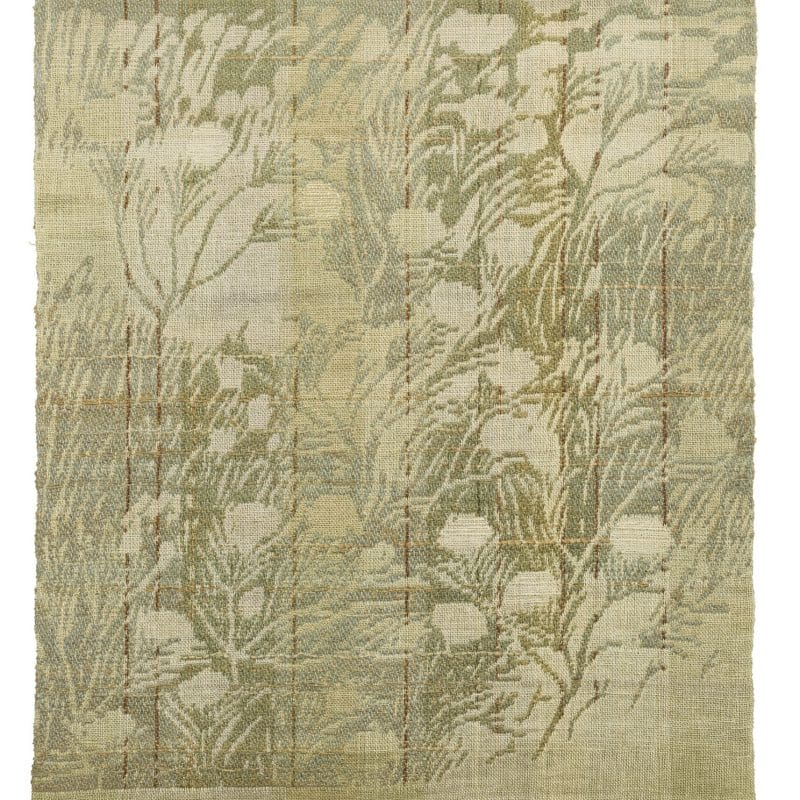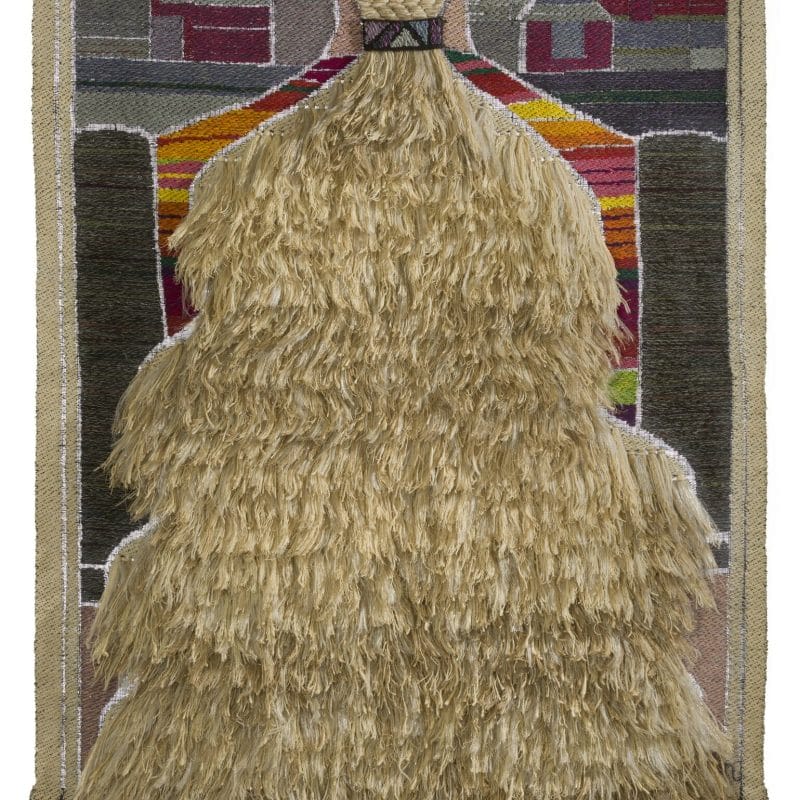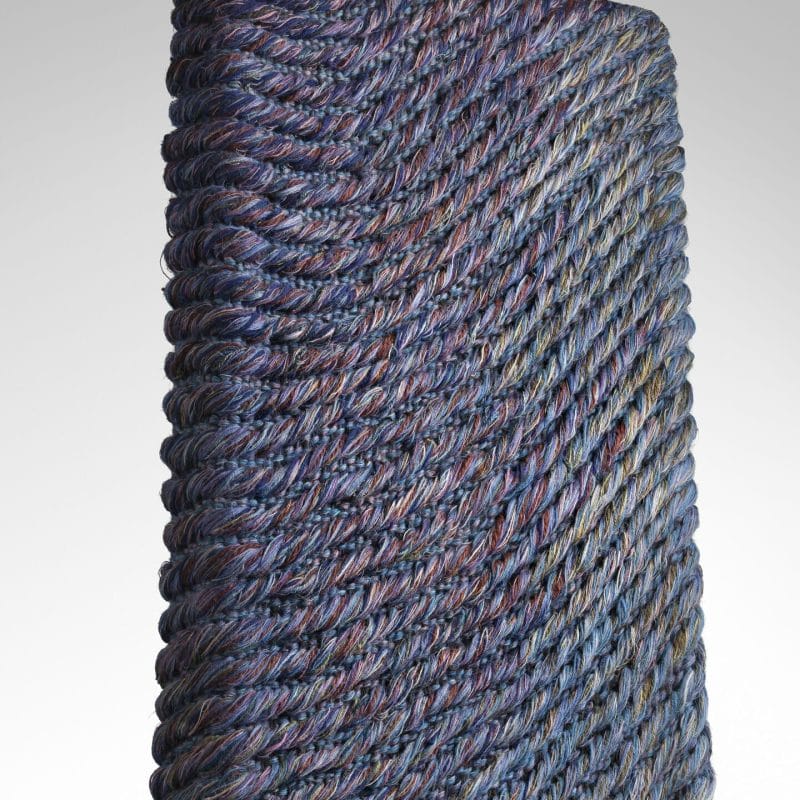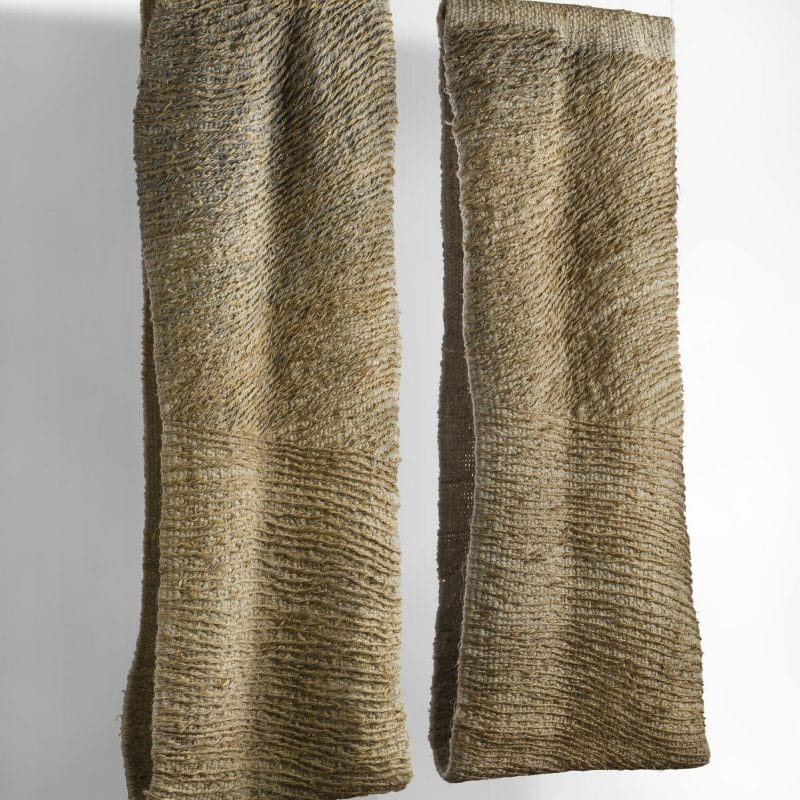Kirsti Rantanen – The Space of Textiles
*Featured photo:Kirsti Rantasen yksityisnäyttely Eld och lågor Kulturhusetissa Tukholmassa 8.2.-28.3.1989. ph. cr.: Designmuseo
The Craft Museum of Finland, Jyväskylä, FI
14.5.–28.8.2022
Showcasing the skills of a strong woman, Kirsti Rantanen – The Space of Textiles tells the story of a pioneering woman’s career as an open-minded innovator in textile art. Kirsti Rantanen (1930–2020) was one of Finland’s leading textile artists and designers of the 20th century. Her oeuvre reflects the changes that began in Finnish textile art in the 1970s and in which she was instrumental. At the time, mostly rectangular pieces of textile art mounted on walls began to be accompanied by works placed freely in their space with their form and variety of materials as important as their technique.
The exhibition is a compilation of Kirsti Rantanen’s life’s work, but the focus is on her artistic output that began in the 1970s which saw the emergence of space-consuming textile works, where form and variety of materials were as important as technique, alongside rya and tapestries. Exhibition includes her less known industrial textile design and pattern design for craft-based industry from the 1950s.
Before the Second World War, textile art was in the forefront of the applied arts in Finland and after the war it was successful in reforming the prominent ryijy (rya) tradition. Despite this, it has had a secondary role in relation to the visual arts and sculpture. Rantanen’s career evolved from industrial designer in the 1950s and 1960s to abstract textile artist in the 1970s and sculptural and space-consuming installations in the 1980s. Rantanen continued to develop his own work. Alongside narrative and explicit imagery came an abstract dimension, centred on references to antiquity and history.
However, Rantanen’s textile sculptures do not merely represent a continuum of history or a new interpretation of tradition. Many of the works are monumental in scale. The works are technically laborious, and their disciplined execution is close to perfection. In the 1970s, the works also reflect a social statement. Rantanen expressed her concern about the desolation of the countryside. She also took a stand for the status of textile art. A female-dominated field, it was often looked down upon by other artists. Kirsti Rantanen’s work has shown that textile art is fully on a par with other visual and contemporary arts. Despite this, she preferred to call herself a textile artist.
Since the early 1980s, sculpturalism and spatiality have dominated Kirsti Rantanen’s works. At the same time, Rantanen also designed and executed more traditional textile works using tapestry techniques. These were mainly commissioned works for public spaces. They were made by Aino Käppi, a weaver at Helmi Vuorelma Oy, and later by Heljä Wiljander, a weaver, together with Kirsti Rantanen at Rantanen’s studio in Hanhilampi.
The exhibition is based on a collection, which was on display at Design Museum, Helsinki in 2016-17. At the same time Kirsti Rantanen donated her collection to the museum.

Kirsti Rantanen
Kirsti Rantanen (née Widing) was born in 1930 in Honkaniemi, in the rural municipality of Vyborg. After the war in 1944, the Widing family settled in Hämeenlinna, where Kirsti Widing graduated from high school in 1949. After studying for six months at Ester Perheentupa’s weaving school, she began her studies in Helsinki at the ‘Ateneum’, as the School of Art and Design was then called. She graduated from the Department of Textile Art in 1952.
Kirsti Rantanen participated actively and successfully in textile design competitions in the 1950s and 1960s, organised by The Friends of Finnish Handicraft, Neovius Oy and Helmi Vuorelma Oy, among others. She was an important teacher for many generations of textile artists from 1959 onwards. She started as a class teacher at the College of Art and Design, and from 1973 she was a lecturer in print fabric design at what became the University of Art and Design.
International contacts were important for Rantanen and encouraged her to develop independent expression. Drapery and cavity weaving, built in a free warp, became a key working method that Rantanen developed over the years. Three-dimensional, spatial works became a characteristic of his work, especially from the late 1970s onwards.
In 1983, Kirsti Rantanen was awarded a five-year artist’s professorship, which allowed her to remain a freelance artist. Kirsti Rantanen moved to Hanhilampi in Porvoo, where she could concentrate on her artistic work. The results of her work were shown in a solo exhibition, Virta virtaa, at the Amos Anderson Art Museum in Helsinki in 1987. All of Rantanen’s monumental works were created in the Hanhilampi studio between 1984 and 1993.
Kirsti Rantanen had a solo exhibition at the Amos Anderson Art Museum was followed by A Rope with a Ladder exhibition at the Old Chaplain’s House in Porvoo and Eld och lågor at Kulturhuset in Stockholm, both in 1989. Stockholm exhibitions were followed by her own exhibition Mot marken in Trondheim, Norway. Galleria Nuovo in Lahti had hosted several solo exhibitions of Rantanen’s work between 1980 and 2000. In 1991, a cultural centre was opened in Juteinitalo, Hattula, with the inaugural exhibition Through Stone by Kirsti Rantanen.
The series of exhibitions culminated in 1992 with Abandoned stage at The Barbican Centre in London.
More information:
www.craftmuseum.fi/en/craft-museum-finland/nayttelyt-ja-tapahtumat/temporary-exhibitions/kirsti-rantanen-space-textiles
The Craft Museum of Finland
Kauppakatu 25, 40100 Jyväskylä
t. +358 14 266 4370
www.craftmuseum.fi/en
